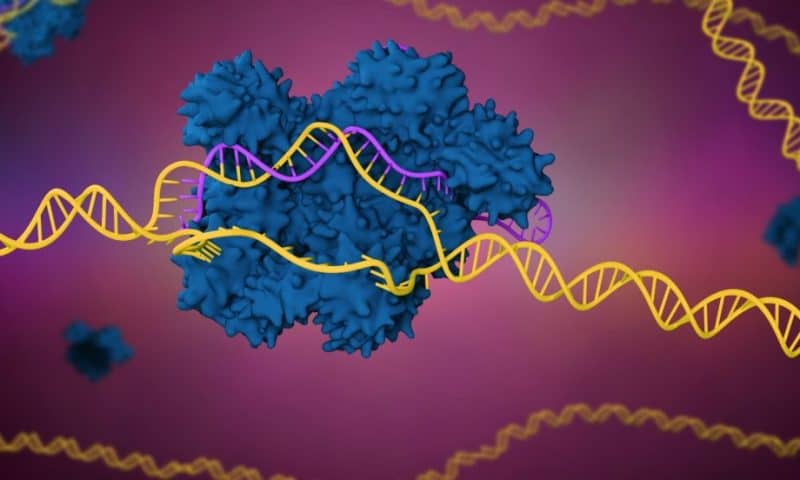
While CRISPR-mediated gene editing has led to powerful advances across biology, medicine, and agriculture, challenges persist in optimizing the editing efficiency of enzymes, such as the widely used Cas9 nuclease. This is especially true in therapeutic use cases, where the goal is to attain high rates of editing via a relatively low and transient enzyme dose.
In a new study published in the April 2025 issue of The CRISPR Journal titled, “Hairpin Internal Nuclear Localization Signals in CRISPR-Cas9 Enhance Editing in Primary Human Lymphocytes,” researchers from the Innovative Genomics Institute (IGI) at the University of California (UC), Berkeley, present a strategy to improve editing efficiency in human immune cells for therapeutic applications by leveraging new constructs for nuclear localization signal (NLS) sequences.
“Efficient CRISPR enzyme production is essential for translation. This is one element that allowed the rapid clinical evaluation of Casgevy, the world’s first genome editing drug. Unfortunately, this aspect tends to be overlooked in the basic research performed in academia,” said Ross Wilson, PhD, assistant adjunct professor of molecular and cell biology at UC Berkeley, who led the new study.
“Our work aimed to close this gap by finding a way to increase NLS density while maintaining the capacity for high-yield production. We think this should be a win-win for clinical use,” Wilson told GEN.
Engineered variants of CRISPR enzymes with diverse NLS sequences have shown success in promoting nuclear localization and efficient DNA editing. The study applied a new approach that installed hairpin internal nuclear localization signal sequences (hiNLS) at selected sites within the backbone of CRISPR-Cas9. This approach contrasts with the widely adopted strategy of incorporating terminally fused NLS sequences.
The study evaluated the genome editing activity of hiNLS constructs using two delivery methods for ribonucleoprotein (RNP) enzymes: electroporation, a basis for several clinical trials, and peptide-enabled RNP delivery, a hardware-free, nonviral approach which the authors view as a proxy for other in vivo delivery technologies.
RNP is appealing for therapeutic use because it is inherently transient, which minimizes off-target editing and risk of immune response. Due to RNP’s 1–2 day half-life, the enzyme must quickly reach the nucleus so that it can induce editing before it is metabolized by the cell, thereby explaining the impact of NLS density on editing efficiency.
Wilson team’s results showed that hiNLS Cas9 variants effectively improved editing efficiency in human primary T cells compared with constructs with terminally fused NLS sequences. They found enhanced knockout efficiencies for beta-2-microglobulin (B2M), a protein crucial in antigen presentation and immune response, and T cell receptor alpha chain (TRAC), a key immune signaling protein.
The authors stated that the versatility demonstrated across different target genes highlights the robustness and potential translational impact of these hiNLS constructs. Additionally, hiNLS constructs can be produced with high purity and yield compared to their terminally fused counterparts, thereby supporting manufacturing scalability.
Wilson stated that prior work performed in the lab of his IGI colleague, CRISPR Nobel laureate, Jennifer Doudna, PhD, has shown that increased NLS density has improved the ability of Cas9 to self-deliver into cells. As a result, his team is in the process of evaluating hiNLS Cas9 for its capacity to self-deliver into various clinically relevant contexts. Wilson said he is “optimistic” that this could be an added benefit of these constructs beyond what has been reported to date.

